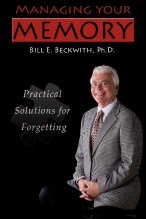Algorithm To Treat Alzheimer’s Disease
Despite the “therapeutic nihilism” that seems to dominate thinking about Alzheimer’s disease there are essential components that should be included in managing Alzheimer’s. Jeffrey Cummings details these components in the Annals of Clinical and Translational Neurology (A practical algorithm for managing Alzheimer’s disease: What, when, and why? 2015, 2, 307-323, PMID 25815358). An effective treatment plan should include:
Strategies for managing risk factors starting at least in middle age. Consider adopting a “Mediterranean style” diet; minimize consumption of alcohol; supplement with omega 3, B vitamins, and E (if already clinically diagnosed); exercise regularly; engage in intellectual interests; become educated about Alzheimer’s disease; participate at some level in music and art; get adequate sleep; manage stress, let a pet adopt you; include stimulating day programs appropriate for the various stages of memory loss for those already diagnosed; and use a calendar and external supports to stay engaged in life.
Once diagnosed, consider treatment with appropriate medications: cholinesterase inhibitors (Aricept/donepezil, Exelon, or galantamine). These medications slow/delay decline in many if tolerated. All three have similar efficacy and follow up is needed to assess and manage possible side effects. Begin assessing and monitoring cognition and ADLs 6 months after initiation of treatment. Consider adding Namenda in moderate to severe disease.
There may be potential for including a trial on therapeutic foods such as Axona, NAC, and Vayacog under clinical supervision. This seems more experimental to me at this point based on the data available.
Manage “comorbidities.” These include cardiovascular disease, thyroid function, sleep apnea (doubles the risk for Mild Cognitive Impairment and dementia over the course of 5 years), osteoporosis, cancer, glaucoma, depression, hypertension, diabetes, infections, incontinence, and rheumatoid conditions. These diseases increase the rate of cognitive decline and frailty.
Assess safety. Have an OT and PT assessment in the home. Remove firearms. Monitor and assess the appropriateness for driving.
Have legal directives in place. Make sure you have a durable power of attorney and living will in the context of your life planning. Develop a plan for assessing, protecting, and transfer of financial and medical decision making as the disease progresses.
Know the options for in-home and residential care should they be desired or needed. Discuss these issues early and openly. Have a plan that you hope to never need to use to protect against decision making during crisis.
Don’t forget to include family and caregivers in planning and treating Alzheimer’s disease. They are the foundation for success and practical management in everyday living. They need support, education, guidance to help the not only to be effective caregivers but also to be sure they do what is necessary to have a life beyond caregiving.




